#InsertAnInvert
Photo



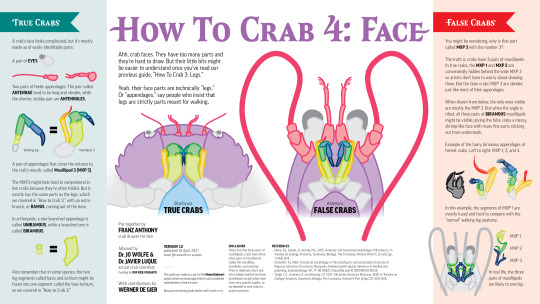


Hello, artist. Nice art you have there.
You know what would make it better? Crabs.
But crabs are hard to draw, you say. I agree. That's why I teamed up with @jopabinia, @JaviPaleobio and @Werner_deGier to make this cheat sheet so you too, can #InsertAnInvert into your artwork with confidence.
—
#InsertAnInvert is a series of invertebrate drawing guides done in collaboration with actual experts (like, literal Dr. Crabs and Dr. Cephalopods and all that) so if you could give them a follow on twitter that’d be swell.
High-res PDFs available for free on my rarely updated Patreon. Absolutely no money required. I just think Patreon is useful for attaching PDFs.
3K notes
·
View notes
Text

Painted Hickory Borer - Bugs Among Us: Around Logs
#InsertAnInvert2024#InsertAnInvert#sciart#my art#digital art#bugs#beetle#nature#nature art#nature focused#natural history#natural world#illustration#artblr#tumblr artists#artists of tumblr#artists on tumblr#krita#artwork
61 notes
·
View notes
Text

Participating in #InsertAnInvert2024 this year!
January's theme is "Bugs Among Us"
Week 1 is "At Home"
Behold: the firebrat (thermobia domestica)
He's just a weird lil guy.
(looks a bit janky 'cause I ran it through Glaze)
#art#digital art#noai#artists on tumblr#blue#cyan#haltone#screentone#bug CW#bugs#thermobia domestica#firebrat#insertaninvert2024#insertaninvert#bugs among us#illustration#weird lil guys#cute bugs
15 notes
·
View notes
Text

🪱 #InsertAnInvert2024
Worms: Long and Limbless
Shipworm
Despite the appearance, shipworms are actually a mollusc! These bivalves have evolved to use their shells not for protection, but for boring through driftwood.
------
Interested in learning more about the invertebrate animals around us? Join into the year-long InsertAnInvert event organized by Franzanth, where every week a new animal is spotlighted! Draw unique animals, read up on cool facts, or just follow the tag online to see a lot of cool artwork.
Prompt List: https://bsky.app/profile/franzanth.bsky.social/post/3khyob3xn742q
------
Like my work? Visit my shop, or support me on Ko-Fi!~
#cuttledreams#insertaninvert2024#shipworm#bivalve#molluscs#I love shipworms#have wanted to paint some for almost a year and am so happy it was on the prompt list
208 notes
·
View notes
Text

Week 5 of InsertanInvert over on blsky run by @franzanth ! You should go check it out there, but I'm cross-posting my Maratus pardus over here too because I thought this group of spiders was all so beautiful and distinct.
23 notes
·
View notes
Text
Adorable crab encased in amber is among the oldest true crabs ever found
https://sciencespies.com/nature/adorable-crab-encased-in-amber-is-among-the-oldest-true-crabs-ever-found/
Adorable crab encased in amber is among the oldest true crabs ever found
A tiny crab scuttled around a forest floor, in the time of dinosaurs, minding its own business, when a blob of tree goop oozed onto it. Despite its struggles – during which it may have amputated its own leg in a futile attempt at escape – the sticky tree resin hardened around it, entombing it for almost 100 million years.
“When I saw it for the first time I could not believe my eyes,” Harvard paleontologist Javier Luque said. “This spectacular crab looks so modern, like something you may find in [British Columbia] flipping rocks, but it is actually quite old and different from anything seen before, fossil or alive.”
Micro-CT scans revealed the amber had preserved the 5-millimeter crab to an exceptional level – even protecting the crab’s delicate setae (invertebrate ‘hairs’) around its slightly open mouthparts.
Fragile gills and intricate compound eyes were still intact for the researchers to examine, and a clear molting line indicated the crab was still alive when drowned in tree resin. One of its legs is detached from its body, possibly due to limb autotomy.
“Cretapsara athanata is the most complete fossil crab ever discovered,” said Luque. He and his colleagues named the crab for “the immortal Cretaceous spirit of the clouds and waters” from South Asian mythology.
Amber is like a time capsule that preserves organisms like frozen in time. While most fossils in amber are land-dwelling animals—principally insects—, aquatic organisms such as crabs are extremely rare! #amber #jurassicpark #Cretaceous #Crabs Photo by @LidaXing1982 3/n pic.twitter.com/5JOoboMjnX
— Javier Luque (@JaviPaleobio) October 20, 2021
The fossil was found in a Kachin Province of Myanmar, a region now sadly embroiled in sociopolitical conflict. In recognition and to raise awareness of the unfortunate role the fossil trade is playing in funding the devastating conflict, Luque and colleagues declared they will only explore fossils from before 2017, when the current conflict resumed.
This amber was legally purchased by the Longyin Amber Museum in 2015. Plant tissues and insect poop within it suggest the amber formed on or near the forest floor, an assumption backed up by the lack of sand and layers that would have indicated the amber met water at some point.
However, the stunningly preserved gill anatomy of the crab fossil did not show any signs of land adaptation, like the lung tissue we see in terrestrial crabs today, so the crab was likely amphibious, the team concluded. It possibly lived in freshwater pools in the forest, estuaries, or migrated from the sea like Christmas Island red crabs.
One of the most remarkable surprises of the new fossil discovery is the preservation of tiny gills in #3D , revealed via a microCT scan. Mind-blowing! 🤯 What can we learn from the exceptional preservation of this crab in amber? #VirtualPhotography #OA https://t.co/NyXXTQj4Ax pic.twitter.com/8HI7k7EjXR
— Javier Luque (@JaviPaleobio) October 20, 2021
Crab fossils extend back more than 200 million years ago, displaying an incredible diversity in forms since then. This new find from the Early Cretaceous (~99 million years ago) has a mix of early and later evolved features that indicate crabs were already established in non-marine environments back then.
“This crab is telling us a very interesting story about the tree of life of crabs,” said Luque. “There is a lot of excitement about crab evolution because evolution has produced crab-like forms, known as carcinization, many times independently.”
And here is a stunning #3D video #animation of tiny Cretapsara athanata that will blow your mind! Because every day is #CrabDay 🦀🙌 Click here👇 #SciComm #sciart #paleoart #InsertAnInvert #Science #nature #art @HarvardOEB @NSF @NSERC_CRSNG 8/n pic.twitter.com/eOWWv1XO2F
— Javier Luque (@JaviPaleobio) October 20, 2021
C. athanata is one of the oldest and most complete finds belonging to the group of true crabs, Brachyura (as opposed to ‘false crabs’ like hermit crabs) – the same group as the crabs still scuttling about today. But there was a massive 50 million year gap between when molecular and fossil evidence indicated the split between marine and terrestrial/freshwater crabs took place.
“Cretapsara bridges the gap between the molecular DNA split of non-marine crabs from their marine kins (~130 million years ago) and their oldest known fossils (~75–50 million years ago),” explained Luque on Twitter. It also “tells us that crabs have conquered land and freshwater more than 12 times independently!”
Evolution sure loves messing with crabs.
This research was published in Science Advances.
#Nature
0 notes
Text
Tweet from franz, crab content (@franzanth)
franz, crab content (@franzanth) Tweeted:
Hello, artist. Nice art you have there.
You know what would make it better? Crabs.
But crabs are hard to draw, you say. I agree.
That's why I teamed up with @jopabinia & @JaviPaleobio to make this cheat sheet so you too, can #InsertAnInvert into your artwork with confidence. https://t.co/1T8b95W4Dl https://twitter.com/franzanth/status/1377953148728307717?s=20
0 notes
Text
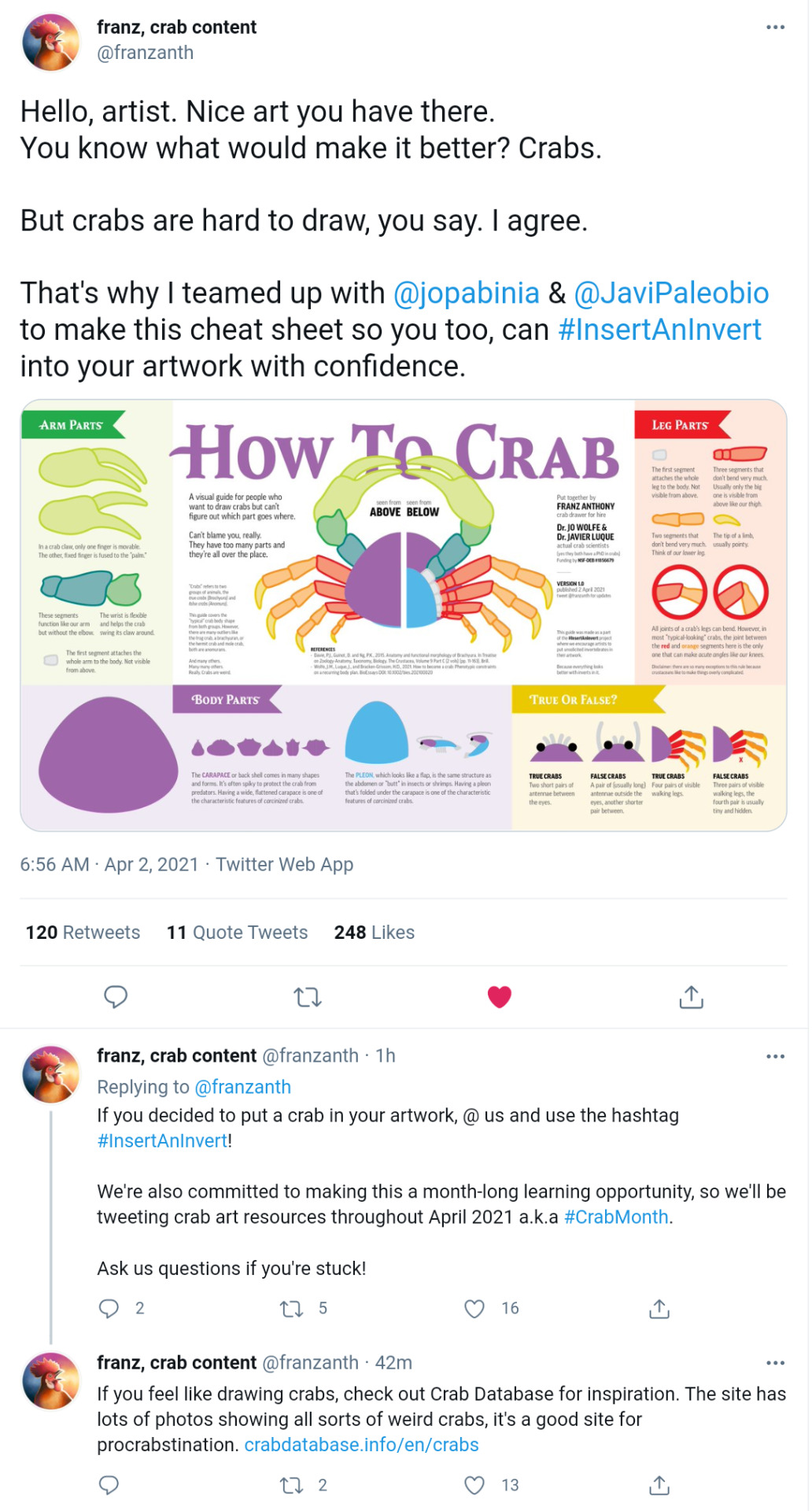
[Text ID:
Twitter user franz, crab content (@franzanth) writes
"Hello, artist. Nice art you have there. You know what would make it better? Crabs. But crabs are hard to draw, you say. I agree. That's why I teamed up with @jopabinia & @JaviPaleobiovto make this cheat sheet so you too, can #InsertAnInvert into your artwork with confidence."
Instructional art poster titled "How to crab"
To the left of the central image is an introduction : "A visual guide for people who want to draw crabs, but can't figure out which part goes where.
Can't blame you, really. They have too many parts and they're all over the place.
"Crabs" refers to two groups of animals, the true crabs (Brachymura) and false crabs (Anomura).
This guide covers the "typical crab" body shape from both groups.
However, there are many outliers, like the frog crab, a brachyuran, or the hermit crab and mole crab, both are anomurans.
And many others. Many, many others. Really. Crabs are weird."
The central image is a multi-colored, simplified, segmented anatomy drawing of a crab, arms arcing over its head. The main body shows a dividing line down the center with the explanatory text labeling the halves "seen from Above", where the shell hides roughly the first quarter of the legs, and "seen from Below", where all of the small, initial leg segments are fully visible.
Beneath the central image are the citations, "References : - Davie, P. J., Gguinot, D., and Ng, P. K., 2015. Anatomy and functional morphology of brachyura. In Treatise on Zoology-Anatomy, Taxonomy, Biology. The Crustacea. Volume 9 Part C (2 vol.) (pp. 11-163) [artist-added commentary on this work =] Brill. - Wolfe, J. M., Luque, J., and Bracken-Grissom, H. D., 2021. How to become a crab : Phenotypic constraints on a recurring body plan. BioEssays. DOI 10:1002/bies202100020."
To the right of the central image are the credits : "Put together by Franz Anthony, crab drawer for hire ; Dr. Jo Wolfe & Dr. Javier Luque, actual crab scientists (yes, they both have a PhD in crabs). Funding by NSF-DEB #1856679.
Version 1.0 published 2 April 2021
tweet @franzanth for updates
This guide was published as part of the #InsertAnInvert project where we encourage artists to put unsolicited crabs in their artwork. Because everything looks better with inverts in it."
Left sidebar:
"Arm parts. In a crab claw, only one finger is movable. The other, fixed finger is fused to the "palm".
[Pincing range of the claw is illustrated, with the claw closed and opened.]
These segments [two of three chunks that make up the main part of the crab's arm are highlighted in dark blue] function like our arm but without the elbow. The wrist [final chunk of the crab arm is highlighted in dark green] is flexible and helps the crab swing its arm around.
The first segment [a small gray square of a segment] attaches the whole arm to the body. Not visible from above."
Right sidebar:
"Leg parts. The first segment [a small gray square of a segment] attaches the whole leg to the body. Not visible from above.
Three segments [highlighted in red] that don't bend very much. Usually only the big one [the segments are two small squares and a rectangle roughly three times their combined length] is visible from above, like our thigh.
Two segments [highlighted in orange, visible in the central image as angling off the prior leg segment at about a 20-degree angle] that don't bend very much. Think of our lower leg.
The tip of a limb [segment highlighted in yellow] usually pointy."
Two circles below illustrate the bending of the crab's 'knee'.
"All parts of a crab's legs can bend. However, in most" typical-looking" crabs, the joint between the red and orange segments is the only one that can make acute angles like our knees. Disclaimer: there are so many exceptions to this rule, because crustaceans like to make things overly complicated."
Bottom bar:
"Body parts. The carapace or back shell comes in many shapes and forms. It's often spiky to protect the crab from predators. Having a wide, flattened carapace is one of the characteristic features of carcinized crabs. [A variety of crab shell shapes meeting this description are shown in a line.]
The pleon, which looks like a flap, is the same structure as the abdomen or "butt" in insects or shrimps. Having a pleon that's folded under the carapace is one of the characteristic features of carcinized crabs."
Bottom right sidebar:
"True or false?
True Crabs [a crab head, four short silver lines between the eyes] :
Two short pairs of antennae between the eyes.
False Crab [a crab head, two long silver lines framing the eyes, two short silver lines between the eyes] :
A pair of (usually long) antennae outside the eyes, another shorter pair between.
True Crab [four crab legs] :
Four pairs of visible walking legs.
False Crab [three crab legs and a red 'x' where a fourth isn't] :
Three pairs of visible walking legs, the fourth pair is usually tiny and hidden."
Following the art poster are two more replies from the original poster:
"If you decided to put a crab in your artwork, @ us and use the hashtag #InsertAnInvert! We're also committed to making this a month-long learning opportunity, so we'll be tweeting crab art resources throughout April 2021 a.k.a #CrabMonth. Ask us questions if you're stuck!"
"If you feel like drawing crabs, check out Crab Database for inspiration. The site has lots of photos showing all sorts of weird crabs, it's a good site for procrastination [procrastination]. https://crabdatabase.info/en/crabs"
/end text]
0 notes
Text
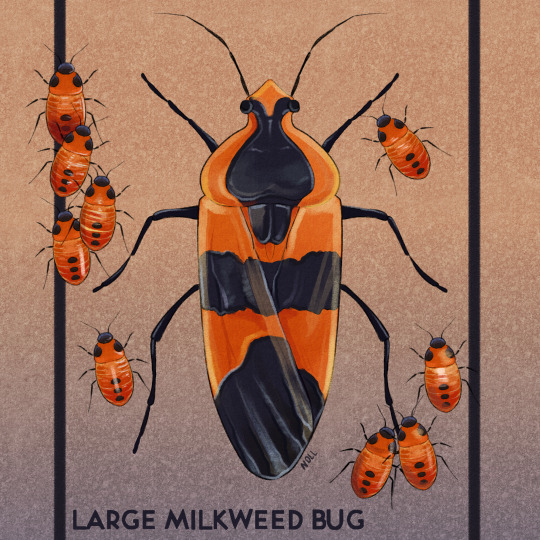
InsertAnInvert2024: Babies
#my art#digital art#illustration#sciart#large milkweed bug#bugs#animals#nature#nature art#science art#field guide#digital artist#krita#insertaninvert2024#insertaninvert#artblr
31 notes
·
View notes
Text
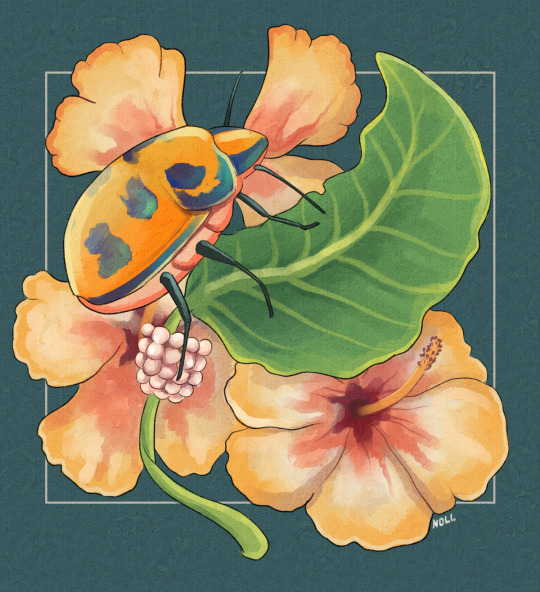
Hibiscus Harlequin Bug
#sciart#my art#beetle#hibiscus#digital art#floral art#flora and fauna#bugs#illustration#digital artist#krita#insertaninvert#invertebrates#invertefest#artblr#colorful
23 notes
·
View notes
Text
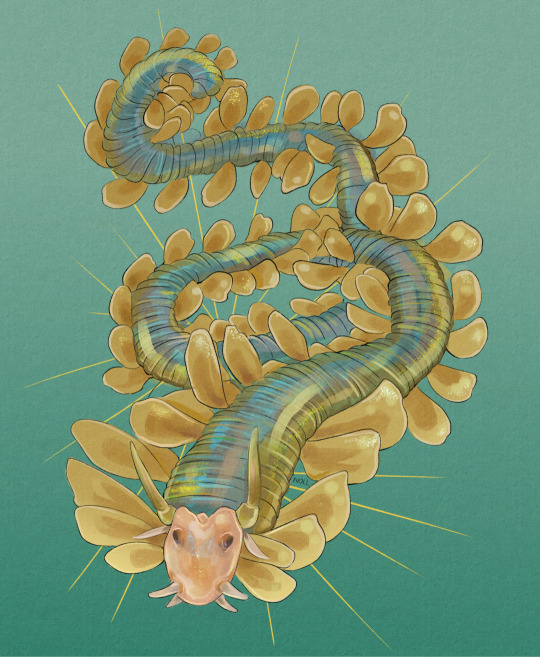
The most beautiful worm I've ever seen, Phyllodoce medipapillata.
#my art#digital art#digital artist#artblr#artists of tumblr#sciart#insertaninvert2024#insertaninvert#invertebrates#paddleworms#natural history#nature art#animal art#weird animals#weird nature#beautiful nature
13 notes
·
View notes
Photo
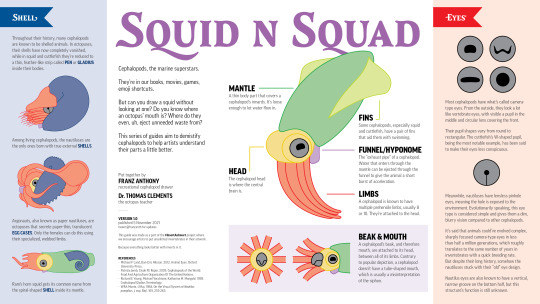
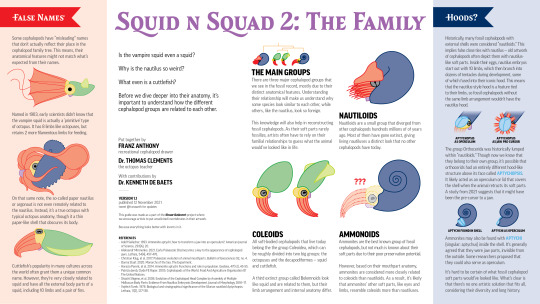


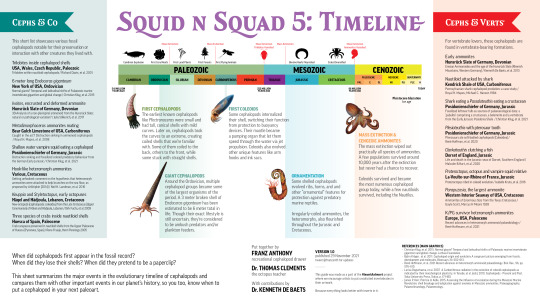
How do you do, fellow squid?
@Thomas_Clements and @djbirddanerd helped me compile everything you need to know about cephalopods so you can #InsertAnInvert into your artwork.
—
#InsertAnInvert is a series of invertebrate drawing guides done in collaboration with actual experts (like, literal Dr. Crabs and Dr. Cephalopods and all that) so if you could give them a follow on twitter that’d be swell.
High-res PDFs available for free on my rarely updated Patreon. Absolutely no money required. I just think Patreon is useful for attaching PDFs.
431 notes
·
View notes
Text
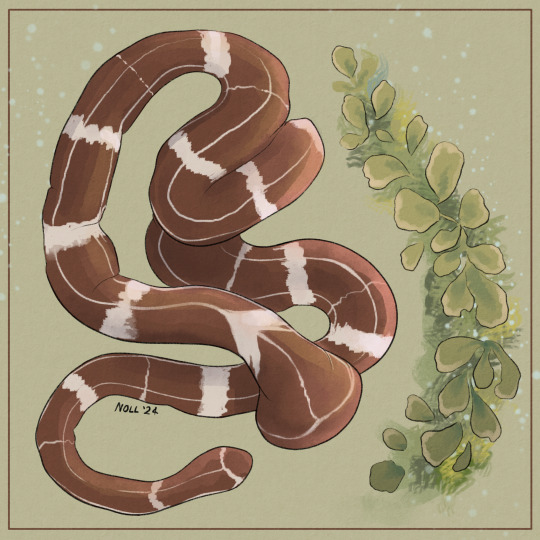
Insert an Invert 2024
Wormification Month Week 1 - Long, limbless
Six-lined Ribbon Worm
#my art#digital art#illustration#digital artist#krita#artblr#artists of tumblr#animal art#insertaninvert#invertebrates#insertaninvert2024#ribbonworm#animal life#worms#sciart#natural history
8 notes
·
View notes
Photo


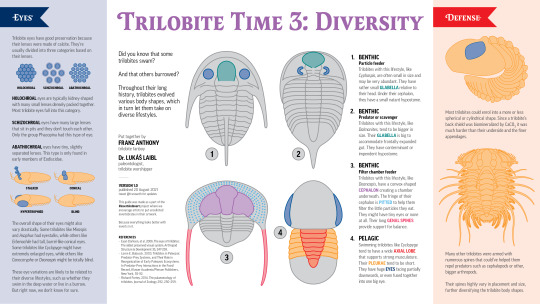


Welcome to Trilobite Time – come on grab your friends, we'll go to the very distant past.
I teamed up with @lukas_laibl to produce a series of drawing guides about trilobites so you too, can #InsertAnInvert into your artwork with confidence.
—
#InsertAnInvert is a series of invertebrate drawing guides done in collaboration with actual experts (like, literal Dr. Crabs and Dr. Cephalopods and all that) so if you could give them a follow on twitter that’d be swell.
High-res PDFs available for free on my rarely updated Patreon. Absolutely no money required. I just think Patreon is useful for attaching PDFs.
279 notes
·
View notes
Text

InsertAnInvert2024
The theme for February is relationships!
Week 5: Courtship
Bark scorpion (centuroides margaritatus)
pinchy stingy mating ritual 🥰
#arachnophobia#arachnids#CW arachnids#insertaninvert2024#insertaninvert#scorpions#artists on tumblr#art#digital art#digital artist#drawing#no AI
9 notes
·
View notes
Photo





The best part of drawing bivalves?
They're mostly underground, so you don't have to draw anything. But for those who want to *actually* draw bivalves for #InsertAnInvert, @spissatella helped me prepare these cheat sheets!
—
#InsertAnInvert is a series of invertebrate drawing guides done in collaboration with actual experts (like, literal Dr. Crabs and Dr. Cephalopods and all that) so if you could give them a follow on twitter that’d be swell.
High-res PDFs available for free on my rarely updated Patreon. Absolutely no money required. I just think Patreon is useful for attaching PDFs.
248 notes
·
View notes